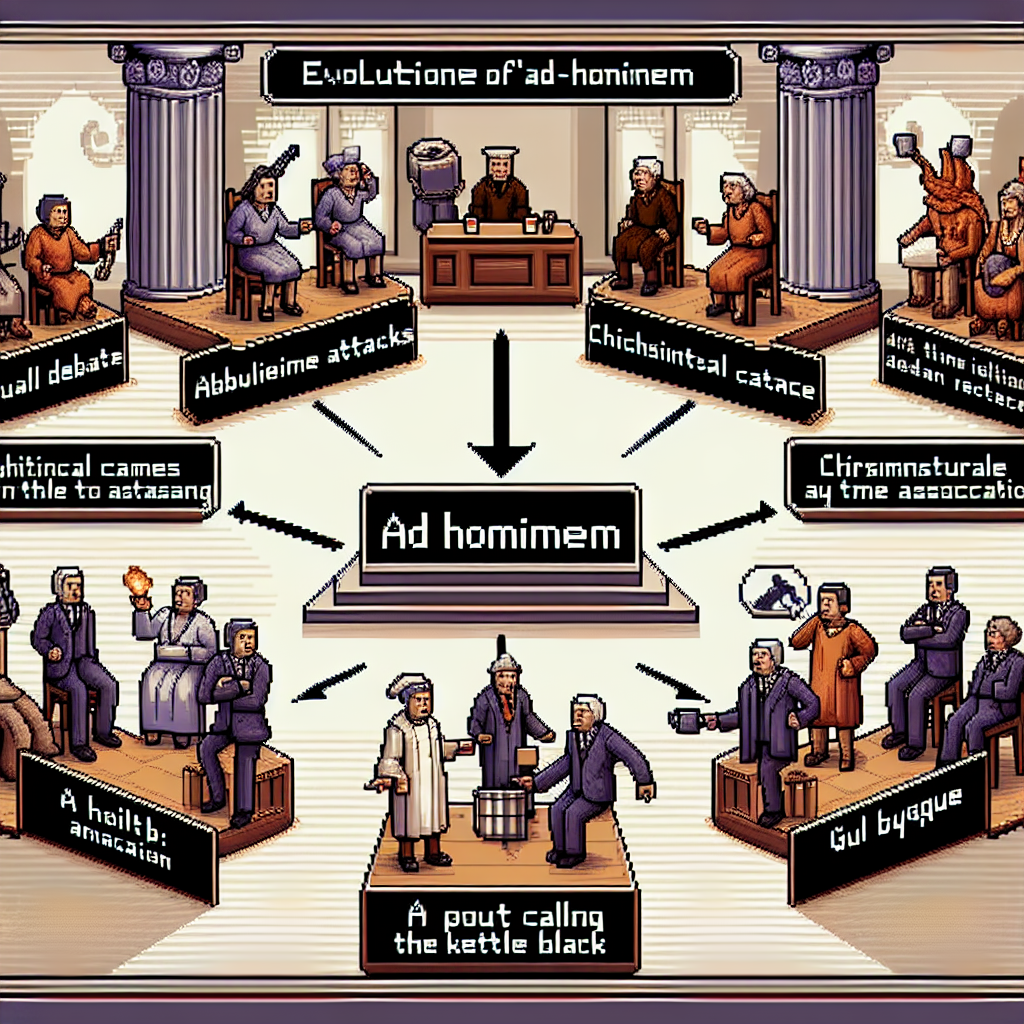“`html
Understanding False Cause in News Reporting
Definition of False Cause
The False Cause fallacy, also commonly known as the post hoc ergo propter hoc fallacy, occurs when a connection between two events is wrongly inferred to be a causal relationship, usually due to sequential occurrence. This logical misstep happens frequently because people often assume that if one event follows another, the first event must have caused the second.
Importance of Understanding Logical Fallacies in News Reporting
Understanding logical fallacies like False Cause is crucial in today’s fast-paced news environment. With the rise of digital media, stories reach a global audience within moments. During this barrage of information, even experienced journalists can fall prey to these fallacies in their reporting. Consequently, misleading information can shape public perception and decision-making processes. By identifying and avoiding such fallacies, media professionals can maintain their credibility and offer more accurate and reliable reporting. Additionally, educating the public on these issues encourages critical thinking skills, equipping society to analyze news with a discerning eye.
“`
Historical Context of False Cause
Origins and Development of the False Cause Fallacy
The False Cause fallacy dates back to ancient times when people first began to seek explanations for natural events. During this period, they often attributed outcomes to unrelated phenomena, laying the groundwork for this type of logical error. Despite advances in scientific understanding, the tendency to identify incorrect causation has persisted, largely because it is deeply rooted in human cognition. Associates with the term post hoc ergo propter hoc, which means “after this, therefore because of this,” the false cause fallacy denotes the incorrect conclusion that a preceding event causes the subsequent one. The fallacy developed as cultures expanded, primarily due to the need to find simple explanations for complex realities.
Notable Historical Examples
Throughout history, many societies have succumbed to false cause reasoning during events of crisis or uncertainty. For example, in the Middle Ages, misinterpretations between celestial events and earthly happenings became commonplace. Additionally, in the 19th century, economic depressions were often erroneously linked to the alignment of celestial bodies. It’s vital to understand these historical examples to appreciate how false cause reasoning has shaped public perceptions over time.
False Cause in Contemporary Media
Common Manifestations in News Stories
The False Cause fallacy frequently appears in news stories as journalists may inadvertently or deliberately link unrelated events. This happens often during complex stories where people strive for explanations.
Impact on Public Perception and Decision Making
The impact on public perception is significant because once a narrative takes hold, it can shape beliefs and actions. For instance, readers may conclude events are connected despite lacking evidence to support such claims. This can lead to misguided decisions that might be necessary.
Additionally, individuals might start doubting the credibility of the media. This becomes problematic because unbiased reporting is essential for an informed society. Moreover, the dissemination of false conclusions can lead to confusion and public mistrust.
To mitigate this, it is crucial for media outlets to thoroughly vet their claims. Ensuring clarity and accuracy during reporting helps maintain the trust of their audience while fostering critical thinking among readers.
Analyzing and Identifying False Cause in News
Examples of Recent News Articles
During recent months, various news outlets have published articles that include the False Cause fallacy. These articles often suggest a direct cause-and-effect relationship that does not exist between two events. For instance, a report linked an increase in internet usage to the rise in health issues without sufficient evidence, displaying this fallacy.
Criteria and Techniques for Spotting False Cause
Despite the complexity of news narratives, identifying the False Cause in articles is achievable with certain techniques. First, skeptically evaluate the cause-and-effect claims by asking whether a correlation is mistaken for causation. Additionally, scrutinize the presence of adequate supporting evidence. Because sound logic is essential, check for data or expert testimony that confirms the claims. Finally, consider other potential explanations, as multifaceted situations often have more than one cause. Training oneself in these critical skills is vital for intelligent media consumption, promoting a well-informed society.
Consequences of False Cause in News
Media Credibility and Trust Issues
Understanding the False Cause fallacy is crucial in maintaining media credibility. Because news outlets often strive for quick reports, they might lean toward hasty conclusions. When these conclusions rely on false causal links, it can erode public trust. Additionally, this erosion can lead audiences to question the integrity of the news source.
Potential Social and Political Ramifications
False Cause errors aren’t just theoretical missteps; they can have tangible impacts. During elections, for example, false causality can alter public perception by presenting skewed relationships between events. This may influence voting behavior and political decisions, potentially destabilizing democratic processes. Furthermore, false cause in reporting has broader social repercussions when it indirectly shapes public opinion on critical issues like health and safety. Such impacts underscore the importance of identifying and addressing this fallacy in journalism.
Strategies for Avoiding False Cause in Reporting
Best Practices for Journalists
In the world of news reporting, it’s crucial for journalists to adhere to best practices that mitigate the risk of the False Cause fallacy. Before publishing a story, reporters should diligently verify the causal links they present, ensuring that they are based on solid evidence rather than mere coincidence. Additionally, newsrooms can establish review policies to assess potentially misleading connections during the editing process.
Educating the Public on Critical Thinking Skills
Beyond journalistic responsibility, educating the public to recognize logical fallacies like False Cause is equally essential. Media outlets should offer resources that encourage audiences to question assumptions and critically evaluate the causes and effects presented in news stories. Because a well-informed public is less susceptible to misleading narratives, these educational efforts contribute significantly to fostering greater media literacy and trust.
Case Study: False Cause in News Reporting
Background
The false cause fallacy often appears in news reporting, leading to significant misinformation. This section examines a recent case study where a reputable news outlet falsely linked a rise in local unemployment rates to immigration, despite evidence to the contrary.
Analysis
During the report, the news outlet failed to consider other contributing factors such as economic downturns and automation, which were prominent before the spike in unemployment. Additionally, data selectively chosen in the report emphasized a correlation without causation, misleading public perception and sparking unnecessary social tension.
Solution and Recommendations
To address this issue, the news organization implemented more rigorous editorial checks. Furthermore, they began training journalists on critical thinking and logical fallacies. As a result, the news outlet not only improved its credibility but also contributed to the broader public understanding of complex social issues. Going forward, they committed to prioritizing balanced reporting to prevent false cause fallacies in future coverage.


